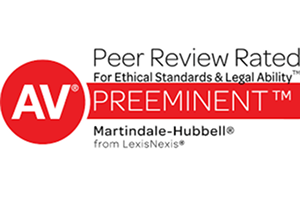Oriented Representation
Lead Poisoning
Injury Attorney Committed to Assisting Knoxville Residents
For decades, lead was used in paint, household products, toys, and other goods. Lead continues to be found in water because of lead pipes or due to lead solder and lead deposits in pipes. It is also sometimes found in costume jewelry, in the top layer of soil, or even in some apple and grape juices. Sometimes imported toys or folk remedies contain lead. The Centers for Disease Control and Prevention (CDC) have found that toxic injury can result from a blood lead level of five micrograms per deciliter of blood, and they have reported that the current level of lead allowed of 10 micrograms per deciliter is too high. Injury lawyer Mark Hartsoe can guide Knoxville residents through the process of seeking compensation for harm caused by toxic lead exposure.
Bringing a Claim Based on Lead Poisoning
Lead can accumulate in the human body and poison the kidneys, heart, bones, intestines, and reproductive systems. Lead poisoning happens if lead—even miniscule flakes of lead—is transferred from the fingers into the mouth or inhaled. Small children age six and under may suffer noticeable health issues, including developmental, cognitive, and attention problems, as a result of exposure. The effects may be irreversible, even if all that was ingested daily was lead that equaled the size of three sugar granules. According to the National Center for Health Statistics, many hundreds of thousands of kids have elevated lead levels.
If your child has been routinely exposed to lead paint in a rented house or on toys or another product, you may have a basis for a toxic tort lawsuit. What must be proven to recover compensatory damages for lead paint poisoning depends on the scenario within which you or your child was exposed to lead paint. One common scenario is that lead-based paint in the home deteriorates and flakes, resulting in a dangerous lead dust that gets on children’s fingers or even directly in their mouths.
The federal Residential Lead-Based Pain Hazard Reduction Act, known as Title X, was enacted in 1992. Regulations implementing it apply to any rental property that was built before 1978. Before signing or renewing a lease or undertaking a renovation, a landlord is required to provide tenants with an Environmental Protection Agency pamphlet on lead in the home. Both the landlord and tenant must sign a disclosure form about known lead paint hazards. If a landlord fails to comply, there may be penalties of up to $10,000. A landlord found liable for tenant injuries must pay three times what a tenant suffers in damages.
If a child is injured due to repeated interactions with a toy that has lead paint in it, it may be appropriate to sue the manufacturer of the toy for producing and selling a defective toy. A defective design involving lead can result in long-term injuries. Most lead paint problems in toys are not the result of defective manufacturing but rather intentional design.
In many defective products cases, Tennessee follows the “consumer expectation test.” Under the consumer expectation test, you will need to show that an item’s performance fell below the minimum safety expectations of any ordinary consumer with common knowledge about a product’s traits. Since lead paint has been known to be harmful to children for many years, it is likely that a toy painted or made with lead paint will fall below most consumers’ safety expectations.
Contact a Knoxville Lawyer to Pursue Compensation
Lead poisoning can be devastating for affected individuals and families. Knoxville attorney Mark Hartsoe can help you bring a product liability claim or another type of lawsuit if you or your child has been exposed to this dangerous substance. For a free initial consultation, call 865-804-1011 or contact us via our online form.









